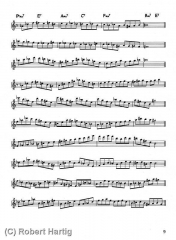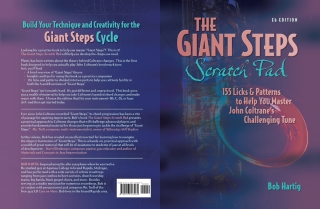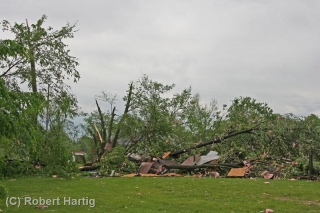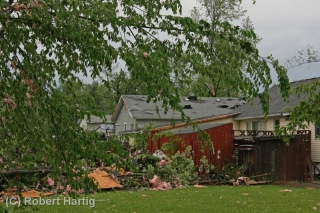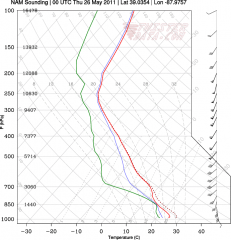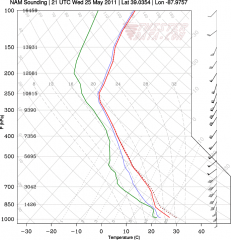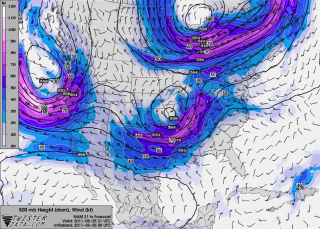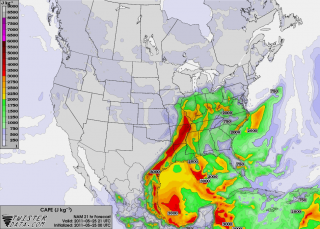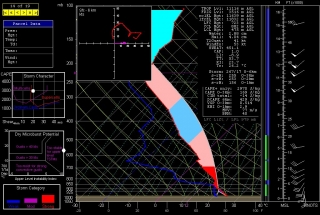Here is an augmented scale pattern that I started tinkering with yesterday. It’s similar to one I’ve practiced fairly often, but inserting an extra note into each four-note grouping–resulting in quintuplets–adds both harmonic and rhythmic color.
The exercise uses the Bb augmented scale. Since it is a symmetrical scale, it also functions as D and F# augmented scales. For the theory behind it, see my first post on the augmented scale and view my page on jazz theory, technique, and solo transcriptions for a number of other articles.
The image to your right (click on it to enlarge) contains three rhythmic variations of the pattern. The topmost is the pattern as I originally conceived it in five-note groupings. The line below it shows how the pattern lays out in a standard eighth-note flow. Last of all you’ll find the pattern set to triplets. These latter two exercises introduce a polymetric element, displacing accents in ways that pack added interest.
During the last few months my focus has shifted to pentatonic scales, and my augmented scale work has consequently suffered. The simple truth is, I just don’t have time to cover all the bases. (I wish I did, but no one is paying me to practice eight hours a day!) Lately, though, now that I’ve gotten the preliminary muscle-memory curve behind me with my pentatonic work, I’ve begun to return to the augmented scale. It is a fascinating, hauntingly colorful scale at which I want to become increasingly adept. The augmented and pentatonic scales both now fit into my practice regimen, along with the diminished whole tone scale. By the time I’m finished working all these weird scales into my fingers, I just hope I’ll remember how to play my major scales.
It goes without saying–it does, doesn’t it?–that you’ll practice this pattern in all four of its tonal iterations (I don’t know how else to say it; you can’t rightly call them “keys”). Remember to keep application in mind. It’s not enough to get this pattern under your fingers; how are you going to use it? Again, see my initial post on the augmented scale.
Other than that, there’s nothing left to say except, as always, practice diligently and enjoy the journey.
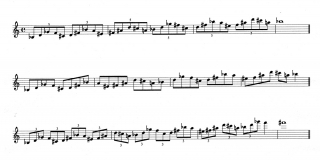

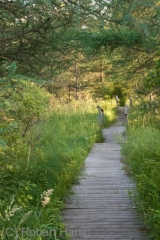
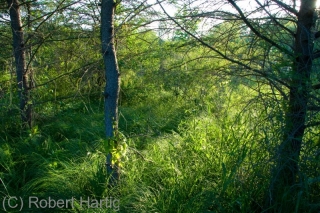









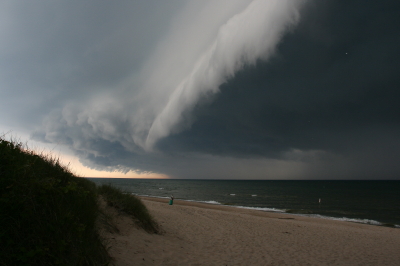 If there’s any advantage to living in the Great Lakes, it’s that we’re close enough to the summer jet stream that it can still dip down out of Canada into our neck of the woods. And while northwest flow isn’t exactly your classic chase scenario, it can deliver some occasional surprises. Illinois in particular has gotten some whopping summer tornadoes–and for those of you who don’t chase east of the Mississippi, I don’t mind telling you that central and northern Illinois is fabulous chase territory. Also, closer to home, even garden variety arcus clouds are sublime to watch sweeping in at the Lake Michigan shoreline.
If there’s any advantage to living in the Great Lakes, it’s that we’re close enough to the summer jet stream that it can still dip down out of Canada into our neck of the woods. And while northwest flow isn’t exactly your classic chase scenario, it can deliver some occasional surprises. Illinois in particular has gotten some whopping summer tornadoes–and for those of you who don’t chase east of the Mississippi, I don’t mind telling you that central and northern Illinois is fabulous chase territory. Also, closer to home, even garden variety arcus clouds are sublime to watch sweeping in at the Lake Michigan shoreline.